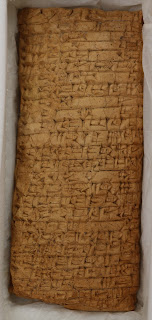Civilisations: A Humorous History
Today, we put a lot
of trust in doctors who prescribe our medication, but how different was medical
knowledge in the past? This blog focuses on the theory that dominated medical
science until the 1700s: the Four Humours of the body.
The four humours are
a medical theory that the human body is made up of four different liquids;
black bile, yellow bile, blood, and phlegm. In a healthy body there is a
balance or equal amount of all four liquids. In the body of a sick person,
there is an imbalance (too much or too little) of at least one the humours.
 |
| The theory of the Four Humours of the body |
This theory was
developed by Hippocrates who suggested that it was a medical imbalance of the
humours that affected bodily functions. Later, Galen classified the humours as
hot/cold, wet/dry. He suggested that the humours could be rebalanced by
treating the patient with its opposite. For example, if you were too cold, you
would take hot baths and eat hot foods. As well as being linked to being
hot/cold, wet/dry, the four humours were linked to the seasons, the elements,
personality traits, and parts of life.
Blood was seen as
being wet and hot. If a physician thought you had too much blood, they would
prescribe bloodletting, where leeches would be attached to the skin to suck
blood from your body! Blood was linked to air, childhood and springtime;
presumably the spring brings a new lease of life. Out of the cold winter,
brightly coloured flowers appear, and many animals have their young. Blood was
linked with a ‘sanguine’ personality type, which describes people who enjoy
taking risks, are enthusiastic, active and love to socialise.
What yellow bile
actually consists of is still up for debate. Historians are unsure as to
whether it is urine, vomit, or stomach bile. Yellow bile was seen as being hot
and dry. It was linked with fire, adulthood, and the summer. Yellow bile was
linked with a ‘choleric’ personality type, which described people who are
independent and goal-oriented; they make great leaders and work things out
logically.
Black bile was seen
as being cold and dry, and is thought to be faeces. Black bile was linked to
earth, old age, and the autumn. This could be because animal dung is used to
fertilise land and so would have strong links to earth and soil. Black Bile was
linked with a ‘melancholic’ personality type. This described people who were
self-reliant, reserved, and strived for perfection.
Phlegm was seen as
being cold and wet. It was linked to water, decrepitude/death, and winter.
Phlegm was linked to the ‘phlegmatic’ personality type. This described people
who were easy-going, peaceful and good at compromising.
The theory of the four
humours was at the forefront of medical science even into the medieval period. As
the church banned human dissections, the theories created by Greek physicians
were seen as being completely accurate!
Polly-Mae
Collections Intern














